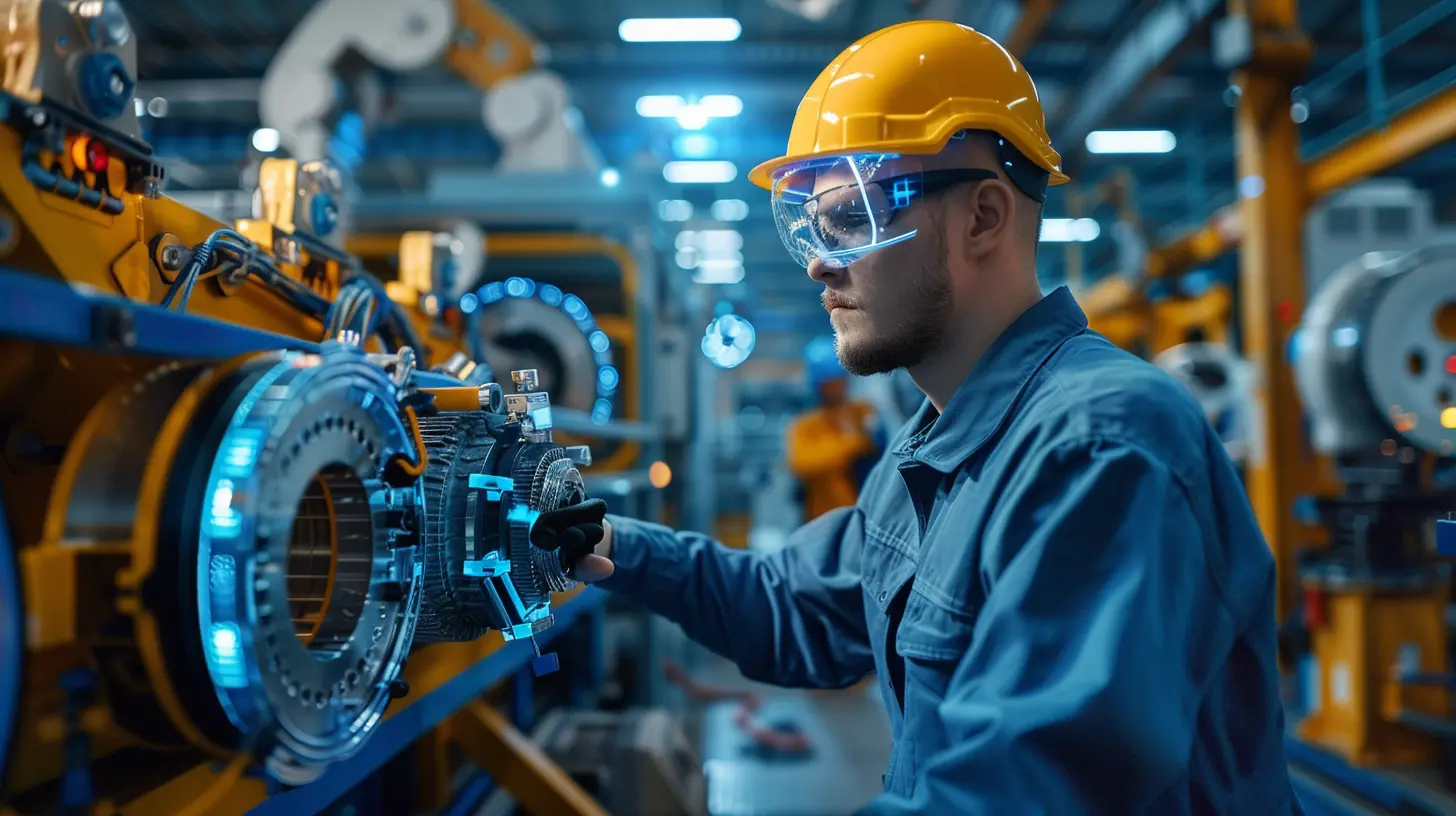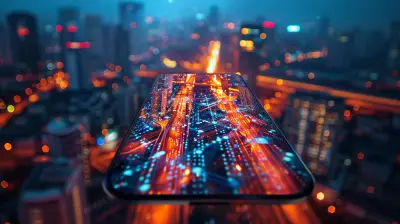Tech Innovations That Are Driving the Future of Green Manufacturing
18 July 2025
Let’s face it: the traditional way of manufacturing things hasn’t exactly been kind to the planet. Massive energy consumption, greenhouse gas emissions, resource depletion—you name it. But here’s the good news: a green revolution is quietly transforming factories, plants, and production lines across the globe.
And the best part? It’s being fueled by jaw-dropping tech innovations that seem like they’re straight out of a sci-fi movie.
In this article, we’ll roll up our sleeves and dive into the future of manufacturing—a future where tech and sustainability go hand in hand. From AI-powered machines to bio-based materials, let’s break down the coolest, smartest, and most game-changing innovations that are driving the future of green manufacturing.
Why Green Manufacturing Needs Tech (and Fast)
Before jumping into the tech, let’s just address the elephant in the room: why does manufacturing need to go green anyway?Because it's responsible for almost 20% of global carbon emissions, and industries still rely heavily on fossil fuels. Plus, the amount of waste generated is—well, let’s say “unbelievable” is putting it mildly.
That's where advanced tech comes into play. Without innovation, ditching those old, dirty processes would be like trying to charge your Tesla with a potato. It just won’t work.
1. Smart Manufacturing & IoT: Factories That Think for Themselves
Ever heard of a factory that can "talk" to itself? Thanks to the Internet of Things (IoT), machines are now embedded with sensors that collect and share real-time data. This means production lines can self-adjust for efficiency, detect equipment wear and tear early, and even predict maintenance before things go haywire.Here’s how it helps go green:
- Zero guesswork: Sensors optimize energy usage and reduce waste.
- Remote monitoring: Keeps emissions low by cutting unnecessary inspections.
- Predictive maintenance: Extends machinery's lifespan and lowers resource consumption.
Imagine your fridge reminding you not to overstuff it because it's wasting energy. That’s what smart factories are doing—on a much bigger scale.
2. Artificial Intelligence (AI): The Digital Brain Behind Green Efficiency
AI is like the brains behind the operation in green manufacturing. These machine-learning algorithms analyze mountains of data to spot inefficiencies, suggest improvements, and even make decisions without human input.So, what’s the AI magic making greener?
- Supply chain optimization: Less transportation, less emissions.
- Dynamic process adjustments: Machines tweak operations for max energy savings.
- Waste management: Tracks patterns to reduce scraps and byproducts.
The big win? AI does all this lightning-fast. While a human would take days to crunch numbers, AI does it in seconds. And the more data it gets, the smarter it grows.
3. 3D Printing (Additive Manufacturing): Less Waste, More Efficiency
Traditional manufacturing often involves cutting materials down to shape—leading to loads of waste. But 3D printing builds parts layer-by-layer, only using what’s needed.Here’s why it’s greener than Grandma’s garden:
- Material efficiency: Uses up to 90% less material.
- On-demand production: Reduces overproduction and storage energy.
- Localized printing: Cuts down shipping and its carbon footprint.
And guess what? Biodegradable printing materials like PLA (made from corn starch) are starting to replace plastics. The future is looking print-tastic.
4. Renewable Energy Integration: Powering Factories with Sunshine and Wind
Electricity is essential, but burning coal and gas for power? Not so much. Manufacturers are now plugging into renewable energy sources like solar, wind, and even geothermal.How this changes the game:
- Solar-powered plants: Some factories are running entirely off solar panels.
- Wind energy contracts: Manufacturers lock in clean energy at stable prices.
- Battery storage tech: Keeps factories running even when the sun sets.
Think of it like switching from gas-guzzling engines to sleek electric motors—cleaner, quieter, and way more efficient.
5. Advanced Robotics: Precision That Saves Resources
Today’s robots aren’t just assembly line workhorses. They're lean, mean, green machines.Advanced robotic systems now use minimal materials, are incredibly energy-efficient, and reduce human error (which can often lead to waste).
Why they’re eco-friendly:
- Precision assembly: Reduces faulty products and waste.
- Consistent speed and energy use: Unlike humans, robots don’t overexert.
- Compact designs: Less material needed to build robots themselves.
It’s like having a chef who never burns the toast—and never takes a break.
6. Green Chemistry: Rewriting the DNA of Raw Materials
Another unsung hero in this transformation? Green chemistry. This involves designing chemical products and processes that minimize environmental harm.Where it’s helping:
- Bio-based solvents instead of petrochemicals
- Non-toxic adhesives in electronics and packaging
- Eco-friendly dyes for textiles and plastics
Companies are now turning to algae, soy, and even food waste to create raw materials. Talk about a glow-up from trash to tech treasure.
7. Circular Manufacturing Models: Making Waste Work
If nature can recycle everything, why can’t we? That’s the idea behind circular manufacturing. Instead of the “make-use-dispose” pattern, this model ensures products and materials are reused, remanufactured, or recycled.Tech that powers this:
- Material-tracking software: Keeps tabs on how materials flow and how they can be reclaimed.
- Reverse logistics platforms: Efficiently bring used products back for refurbishing.
- Digital twin technology: Simulates product lifecycles and explores second-life scenarios.
Instead of tossing a used smartphone, imagine it being reborn as a car dashboard screen. Pretty cool, right?
8. Carbon Capture and Storage (CCS): Breathing Cleaner, One Molecule at a Time
Some emissions are unavoidable (at least for now). That’s why carbon capture tech is a key piece of the green puzzle.How it works:
- Captures CO₂ before it hits the atmosphere
- Stores it underground or repurposes it for other uses (like in concrete or fuel)
- Integrates directly within factory emissions systems
It’s kind of like an air filter but for our entire planet.
9. Blockchain for Transparent Green Supply Chains
Wait, isn’t blockchain just for Bitcoin? Nope. In manufacturing, blockchain technology offers total transparency—meaning you can trace every material back to its origin.How it builds a greener world:
- Blockchain ledgers track carbon footprint of every stage of production.
- Smart contracts ensure eco-compliance by all suppliers.
- Fraud prevention: No more cutting corners without getting caught.
It’s like giving every single product a digital passport. You’ll know where it’s been, who touched it, and how eco-friendly it is.
10. Digital Twins: Trying Before Buying—Sustainably
A digital twin is a virtual replica of a physical object or system. It lets manufacturers simulate a product or process before actually building it.Why it’s a sustainability superstar:
- Zero-waste testing: Simulate every outcome digitally before using materials.
- Process optimization: Identify greener production steps.
- Fewer prototypes: Less physical waste and lower energy bills.
Think of it like trying on clothes in a video game before making a real purchase. Saves time, money, and resources.
The Human Side: Workforce and Culture Matter, Too
Tech is powerful, but let’s not forget people. The shift to green manufacturing also needs upskilled workers, eco-conscious leadership, and a culture that embraces change.Manufacturers are investing in:
- Training programs for operating clean tech
- Sustainability officers to keep goals on track
- Employee rewards for green ideas and low-waste practices
In the end, tools are only as smart as the folks using them.
Final Thoughts: The Green Future is Already Here
Let’s stop thinking of green manufacturing as some far-off dream. It’s happening now—on the factory floor, in supply chains, inside the code of AI systems, and through the lenses of augmented reality glasses.What used to seem impossible is now totally within reach, thanks to tech innovations that are not just making manufacturing smarter, but also way more sustainable.
So the next time you hear someone say “going green costs too much,” you can confidently say: “Not with the right tech.
all images in this post were generated using AI tools
Category:
Environmental TechAuthor:

Ugo Coleman
Discussion
rate this article
2 comments
Jane Mahoney
This article effectively highlights key innovations in green manufacturing. It's inspiring to see how technology is shaping a more sustainable future, but I hope for more examples of real-world implementations.
November 8, 2025 at 4:55 AM

Ugo Coleman
Thank you for your feedback! I appreciate your interest in real-world examples and will consider including more in future articles.
Rachael Hensley
Embracing these tech innovations is essential for sustainable progress in modern manufacturing. The future is green!
July 22, 2025 at 4:19 AM

Ugo Coleman
Thank you! I completely agree—embracing these innovations is key to achieving sustainable and eco-friendly manufacturing practices.


